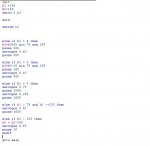haexapodim
Member
hi,
with the help of some of you i have built this form :
whith it you can drive servo
by increment,
by typing the degree value,
by cliking on the seromoteur button (make the servo do one rotation)
by scrolling the track bar
And it's for the track bar that i have a problem (the servo don't follow the orders) and it leads to (i think) a problem signal frequency
is someone have an idea...


with the help of some of you i have built this form :
whith it you can drive servo
by increment,
by typing the degree value,
by cliking on the seromoteur button (make the servo do one rotation)
by scrolling the track bar
And it's for the track bar that i have a problem (the servo don't follow the orders) and it leads to (i think) a problem signal frequency
is someone have an idea...


